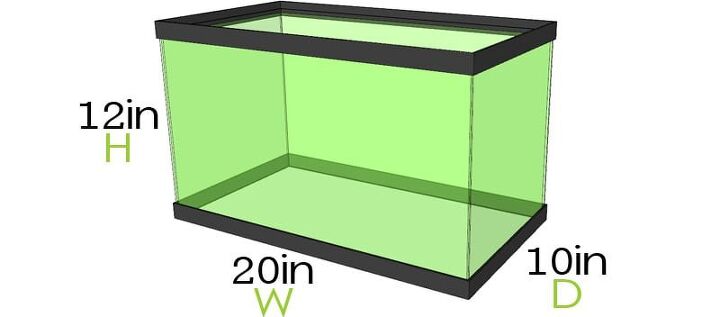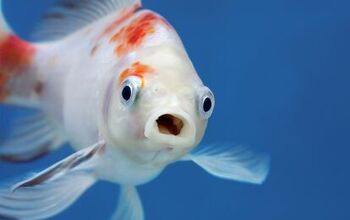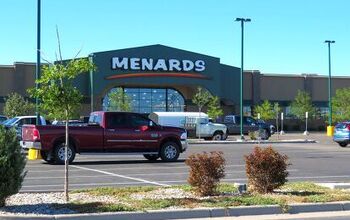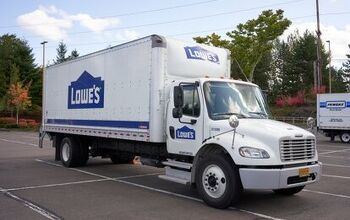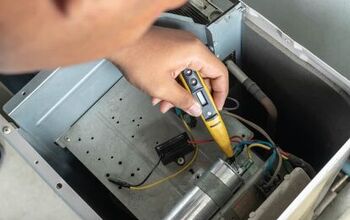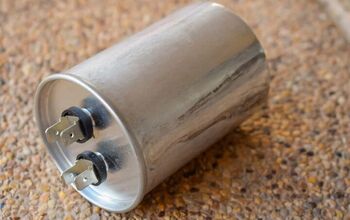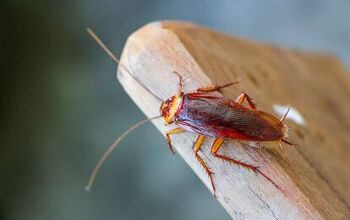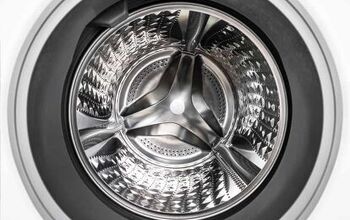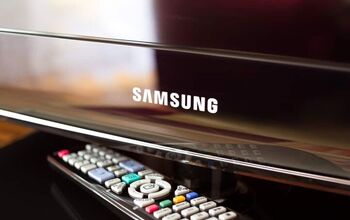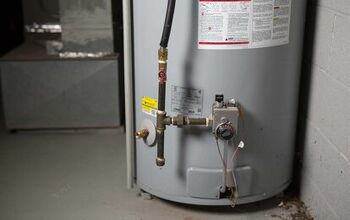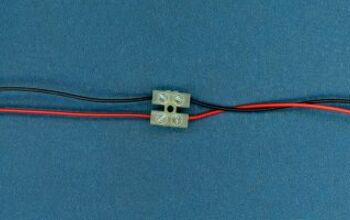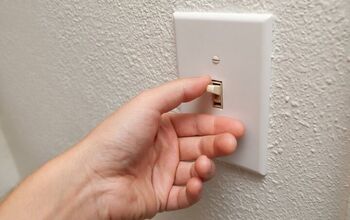10-Gallon Fish Tank Dimensions (with Drawings)

Incorporating a fish into your home can be a simple way to teach children responsibility. It can also add an interesting element to your decor. Before you add an aquarium to your house, make sure you know the dimensions and requirements of having a tank.
A 10-gallon fish tank is 20 inches long by 10 inches wide by 12 inches high. The 10-gallon tank can weigh 111 pounds. So, for every 2.5 centimeters of goldfish, you will need 11 liters of water. That way, you know how many you can put in your 10-gallon tank.
What Are The Dimensions For A 10-Gallon Fish Tank?
A 10-gallon fish tank is considered a small tank. The tank is 20 inches long by 10 inches wide by 12 inches high. When full, a 10-gallon fish tank can weigh 111 pounds.
While most beginners would think this is the best size tank for their new hobby, that is not the case. Smaller tanks can’t absorb common mistakes that can happen.
Small changes in water temperature, pH changes, overfeeding, overstocking, and nitrate buildup are common for aquarist novelists.
10-Gallon Fish Tank Pros And Cons
Basic Aquarium Sizes
Aquariums come in many sizes. Some aquariums are as small as 2.5 gallons, while others are as large as 180 gallons or more. Finding the right tank will depend on your goals and your experience.
Keep in mind that one gallon of water weighs 8.34 pounds. Before placing your aquarium on a surface, ensure that the cabinet, table, or floor can withstand the aquarium’s weight. When filled with water, a 180-gallon tank can weigh over 2,000 pounds.
You can use a calculator to plug in dimensions to get volume.
Exact dimensions can vary by brand and type of aquarium. The following information considers a glass aquarium.
- A 2.5 to 15-gallon tank filled with water can weigh 27 to 170 pounds.
- A 20 to 40-gallon tank filled with water can weigh 225 to 455 pounds.
- A 50 to 180-gallon tank filled with water can weigh 600 to 2,100 pounds.
Small-Sized Aquariums
2.5-gallon tanks to 15-gallon tanks are considered small-sized aquariums.
Small Aquarium Dimensions by Tank Size | |||
| Tank Size | L x W x H | Empty Tank Weight | Filled Tank Weight |
| 2.5-Gallon | 12” x 6” x 8” | 3 pounds | 27 pounds |
| 5-Gallon | 16″ x 8″ x 10″ | 7 pounds | 62 pounds |
| 10-Gallon | 20″ x 10″ x 12″ | 11 pounds | 111 pounds |
| 15-Gallon | 24″ x 12″ x 12″ | 21 pounds | 170 pounds |
| 15-Gallon (Tall) | 20″ x 10″ x 18″ | 22 pounds | 170 pounds |
Mid-Sized Aquariums
20-gallon to 40-gallon fish tanks are considered mid-sized. Mid-sized aquariums are often a good idea for beginners because of their sufficient water volume.
Mid-Sized Aquarium Dimensions by Tank Size | |||
| Tank Size | L x W x H | Empty Tank Weight | Filled Tank Weight |
| 20-Gallon (Tall) | 24” x 12” x 16” | 25 pounds | 225 pounds |
| 20-Gallon (Long) | 30″ x 12″ x 12″ | 25 pounds | 225 pounds |
| 25-Gallon | 24″ x 12″ x 20″ | 32 pounds | 282 pounds |
| 29-Gallon | 30″ x 12″ x 18″ | 40 pounds | 330 pounds |
| 30-Gallon (Breeder Tank) | 36″ x 18″ x 12″ | 48 pounds | 348 pounds |
| 40-Gallon (Breeder Tank) | 36″ x 18″ x 16” | 58 pounds | 458 pounds |
| 40-Gallon (Long) | 48″ x 12″ x 16″ | 55 pounds | 455 pounds |
Large-Sized Aquariums
The larger the aquarium, the more fish you can stock in your fish tank. While that may seem like an advantage, a bigger tank and more fish mean more maintenance. Homeowners with large aquariums often have to find floor reinforcements to support the load, sometimes more than one ton.
When incorporating a big tank, consider the tank’s scale in relation to the room. There should be enough space for hoses and accessories between the tank and the wall. If it’s a high traffic room, make sure there is space to prevent accidents.
50-gallon tanks and larger are considered large-sized aquariums.
Large Aquarium Dimensions by Tank Size | |||
| Tank Size | L x W x H | Empty Tank Weight | Filled Tank Weight |
| 50-Gallon | 36″ x 18″ x 19″ | 100 pounds | 600 pounds |
| 55-Gallon | 48″ x 13″ x 21″ | 78 pounds | 625 pounds |
| 65-Gallon | 36″ x 18″ x 24″ | 126 pounds | 772 pounds |
| 75-Gallon | 48″ x 18″ x 21″ | 140 pounds | 850 pounds |
| 90-Gallon | 48″ x 18″ x 24″ | 160 pounds | 1,050 pounds |
| 125-Gallon | 72″ x 18″ x 21″ | 206 pounds | 1,400 pounds |
| 150-Gallon | 72″ x 18″ x 28″ | 308 pounds | 1,800 pounds |
| 190-Gallon | 72″ x 24″ x 25″ | 338 pounds | 2,100 pounds |
How Many Fish Can Fit In A 10-Gallon Fish Tank?
After purchasing a fish tank, it’s common to want to fill the aquarium with a lot of beautiful fish. However, there is a limit to how many fish can fit in a tank. To prevent overstocking your tank, there are several factors to consider.
One Inch Per Gallon
The one-inch-per-gallon rule is widely known. The rule states that for every one inch of fish, there should be one gallon of water. While this can give you a rough estimate, the rule does leave room for error.
The one-inch-per-gallon rule doesn’t take into consideration filtration systems, plants, and the type of fish. Like humans, fish are of different shapes and sizes. While you can stock a 10-gallon fish tank with 10 inches of zebrafish, 10 inches of goldfish wouldn’t properly fit.
Fish are usually not fully grown when you first bring them home. Use the proper adult size of the fish when calculating the size tank you need. To be safe, assume one inch of fish per two gallons of water when stocking big-bodied fish like Goldfish.
Surface Area
The surface area of the water directly impacts how many fish can be kept in an aquarium. The larger the surface area of the water, the greater the oxygen exchange. The greater the oxygen exchange, the more fish the tank can support.
You calculate surface area by multiplying the width of the tank times the length of the tank. The surface area rule states you can stock a fish tank with one inch of fish per every 12-inches of surface area. However, there are flaws in this rule similar to the one-inch rule as fish can be different sizes.
The surface area rule assumes all fish are slender-bodied. If you choose to use the surface area rule, you’ll have to account for wide-bodied fish kept in the tank. For larger and wider fish, the calculator should be one inch of fish per every 20 inches of surface area.
Other Things To Consider
For typical situations, the one-inch rule is easy to calculate and works well enough. Always use net gallons of water and take into consideration the adult shapes and sizes of fish. If you have an aquarium that is not a standard size, the surface area rule will work better.
Never fully stock a fish tank at one time. No more than 25% of the total volume of fish should be introduced to the aquarium at one time.
Fish waste is toxic, but beneficial bacteria can eliminate it. Bacterial colonies need time to adjust. Adding too many fish at one time can prevent bacterial colonies from growing and removing fish waste toxins.
What Fish Can Fit In a 10-Gallon Tank?
When deciding how many fish to put in a 10-gallon aquarium, consider the other fish in the tank. The following fish are good options to stock your 10-gallon aquarium.
Cory Catfish
Cory catfish are bottom-feeding catfish that grow two to three inches long. These fish are schooling fish, so they prefer when they are in groups of at least six.
Neon Tetra
Neon Tetra are small, vibrant fish that are on average 1.5 inches long but can grow up to 2.5 inches. Females tend to be smaller than average size. Neon Tetras prefer to be in small schools, so 10 fish is best in a 10-gallon aquarium.
Dwarf Gourami
Dwarf Gouramis are blue, red, and orange fish. They are typically 3.5 to 4.5 inches long and prefer to be in pairs in a 10-gallon tank.
Be aware that these fish can be semi-aggressive, so be sure to include hiding spots like plants and caves for separation.
Fancy Guppy
Fancy Guppies are similar to Neon Tetras. These fish come in a variety of colors, and many of them can fit in a 10-gallon tank.
Male Fancy Guppies reach 2 inches in length and are more colorful than females. They also have larger dorsal fins and caudal fins. Female Fancy Guppies are typically 2.5 inches in length.
Betta Fish
Contrary to their reputation, Betta Fish can live in a community tank with other fish in certain situations.
While Betta Fish should not live in a 10-gallon tank with other fish, the tank is perfect for living alone. Betta Fish can also live with Apple Snails or Ghost Shrimp.
Betta Fish have an average length of 2.25 inches when fully grown. On occasion, they can grow as big as 3 inches in length.
Related Questions
Does filtering the water in the fish tank matter?
Filtration is essential because it cleans the water of debris and removes any buildup of ammonia and nitrates. It also aerates the water so that your fish can breathe. Filtration is important when determining how many fish your aquarium will support. The filter should run four times the total volume of water in the tank through the filter each hour. If you have a 10-gallon fish tank, a filter needs to run 40 gallons of water per hour. There is no danger of over-filtering your tank unless it causes too much movement in the water, bothering the fish.
Can Goldfish go in a 10-gallon fish tank?
10-gallon fish tanks are not the best option for Goldfish. Keeping Goldfish in a small tank can lead to water quality issues. Poor water can make the fish sick and even be fatal. Goldfish require a minimum fish tank of 20 gallons. A 20-gallon aquarium is suitable for only two goldfish. Goldfish require larger tanks because they can grow from 6 inches to 24 inches long.

Stacy Randall is a wife, mother, and freelance writer from NOLA that has always had a love for DIY projects, home organization, and making spaces beautiful. Together with her husband, she has been spending the last several years lovingly renovating her grandparent's former home, making it their own and learning a lot about life along the way.
More by Stacy Randall




